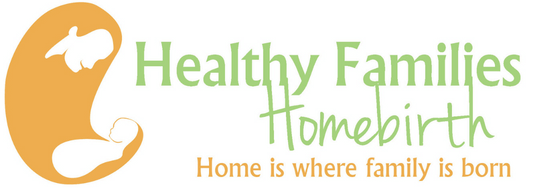

PHONE
303-718-1554
cheryl.furer@msn.com
OPENING HOURS
By Appointment Only
Menu

What is Group B Streptococcus?
Group B Streptococcus (GBS) is a variety of bacteria that is found in the intestines, rectum and, often, vagina of all normal, healthy women. Occasionally, it can travel up the urethra and cause bladder or urinary tract infection, which can be treated with antibiotics. It is not the same bacteria that causes strep throat, and it is not a sexually-transmitted infection. Anywhere from 15%-40% of women can be colonized with it during pregnancy and/or labor. Colonization can occur at any time and can be intermittent, transient, or chronic. Women who test positive for GBS usually have no symptoms and most women are unaware they are even colonized.
Why is GBS a Concern to the Mother?
GBS in a pregnant woman can cause urinary tract infections, endometritis (uterine infection), chorioamnionitis (inflammation of the amniotic membranes) and puerperal endometritis (postpartum infection). There is also a small possibility of a miscarriage or stillbirth. “An estimated 20 -30% of pregnant women carry the bacteria but 99% of babies born to mothers who carry the bacteria are perfectly healthy” (GBS, n.d.).
Why is it a Concern for the Baby?
The concern about GBS is that it can be passed from the mother to her unborn baby. During pregnancy, the GBS bacteria can move from the vagina to the uterus (chorioamnionitis) but more likely, the baby will become colonized during labor or delivery. This colonization can happen if the bag of waters breaks before or during labor and as the baby passes down and out though the colonized vagina.
GBS in the newborn is classified as either “Early-Onset” or “Late-Onset”.
How is it Diagnosed?
The Center for Disease Control and Prevention (CDC) has recommended that all pregnant women be tested for GBS between the 35th – 37th weeks of pregnancy. This is performed by getting a sample from the vagina and rectum with a swab, which looks like a long Q-tip. This sample is then sent to a lab and cultured to see if the GBS is present.
Can I Refuse to Take the Test?
Knowing that you are responsible for your own health care decisions with a home birth, you can choose whether or not you want to be tested. If you choose not to be tested, we ask that you research the subject and ask questions so that you can make an informed decision. However, if in the past you have tested positive for GBS or have had a GBS baby, we strongly recommend that you take the test.
What Happens if I Refuse to take the test or IV Antibiotics?
What if my Test Comes Back Positive?
The CDC recommendation for a positive GBS test in labor is for IV antibiotics be administered every four hours from the time your bag of waters breaks or from the beginning of your labor and continuing until the time of delivery.
What if I don’t want IV antibiotics in labor? You have Options!
Options During Pregnancy:
You can start strengthening your immune system and then if wanted, you can retake the GBS test again in two-three weeks. Of course, there are no guarantees that they will work or that your second test will come out negative. Before starting any of these or any other treatments, please, talk to your midwife.
Some of these alternative/complementary treatments include:
Options During Labor:
IV Antibiotics Use During Labor – The State of Colorado does not allow home-birth midwives to use or have access to antibiotics. Certified Nurse Midwives, such as those that work at a birth center or hospital can provide antibiotics.
Alternative/Complimentary Treatments to Use During Labor
a. A solution of 0.25% Chlorhexidine (Hibiclens) a skin disinfectant and dental treatment can be used as a douche or vaginal cleanse every 4-6 hours during labor.
b. You can choose to do no treatments during labor.
Alternative/Complimentary Treatment Risks in Labor
a. No comparison studies have been done to test whether any of these treatments are more or less effective than IV antibiotic treatments.
b. Chlorhexidine, some women report a mild but temporary burning sensation after use. It has not been approved for this treatment and insufficient research has been done to prove whether or not this is an effective treatment for GBS.
c. If you have GBS at the time of delivery and choose not to use IV antibiotic treatment during labor there is a 1/200 chance your baby may get sick.
Special Considerations
The most effectively proven way to treat GBS in labor is with IV antibiotics given every four hours from the time your bag of waters breaks or when your labor starts until the time of delivery. If you choose not to use IV antibiotics during labor there are certain risk factors that may increase your need to use them:
IV Antibiotic Treatment Risks in Labor
a. The CDC does not address the risks of IV antibiotic use during labor and, as with all treatments, there are both benefits and risks.
b. Due to the overuse of antibiotics, there are strains of bacteria that are becoming antibiotic-resistant. However, this has not been seen with this bacterium as of the year 2010.
c. Many argue that GBS detection due to universal swabbing is one of those situations and that antibiotic use in healthy mothers and infants is the source of disease in the postpartum period.
d. With the use of antibiotics in labor, the rate of GBS infection has decreased BUT the rate of other bacterial infections has increased. E-coli bacteria infecting newborns is on the rise.
Risks of IV antibiotics
Known risks of antibiotic treatment:
Potential risks of antibiotics
For more information:
www.gentlebirth.org
http://www.marchofdimes.com/professionals/14332_1205.asp
http://mothering.com/pregnancy-birth/treating-group-b-strep
http://mothering.com/pregnancy-birth/herbal-treatments-for-group-b-strep
http://pregnancy.about.com/b/2009/07/28/lack-of-evidence-for-antibiotics-for-group-b-strep-inlabor.htm
www.meningitis.org/disease-info/types-causes/gbs
References:
Brooke, S., Whitworth, J., & Calabretta, N. (2009). How best to manage the patient in term labor whose group B strep status is unknown? Journal of Family Practice , 42-43.
Cohain, J. S. (2010). Newborn Group B Strep Infection Top 10 Reasons Not to Culture at 36 Weeks. Midwifery Today , 15.
Colbourn, T., A. C., Bojke, L., & al., e. (Jan2008). Group B strep in pregnancy: Test-and- treat, or just treat? Journal of Family Practice , 11.
Fraser, D. M., & Cooper, M. A. (2006). Myles Textbook for Midwives. Toronto: Churchill Livingstone.
Garner, A. (2009, June 17). Group B Strep Screening Guidelines Sparing Newborns. Retrieved January 3, 2011, from Consumer Health Co
Group B streptococcal (GBS). (n.d.). Retrieved September 17, 2014, from http://www.meningitis.org/disease-info/types-causes/gbs
Lo, J. Y. (December 2009). Early-onset group B streptococcus neonatal disease: a target for prevention? Hong Kong Med J , P. 412-413.
Monaco, J. E. (2004, Vol. 21 Issue 5). A Child as Mother. Pediatrics for Parents , p6-7.
Price, L. (2009). Duty of Care — Supporting Birth Choices (Group B Strep-Home birth). Midwifery Matters , 14-15.
Singleton, M. L. (2007). Group B Strep Prophylaxis: What Are We Creating Midwifery Today , 18-20.
Society of Obstetricians and Gynecologists. (2004). obs-gbs_e.pdf. Retrieved Feb 13, 2011, from SOGC: http://www.sogc.org/health/pdf/obs-gbs_e.pdf
Tharpe, N. (2004). Clinical Practice Guidelines for Midwifery & Women’s Health. East Boothbay, ME: Midwife Publications, Inc.
Weed, S. (1986). Wise Woman Herbal for the Childbearing Year. Woodstock, NY: Ash Tree Publishing.
Wu, H., McLean, M. T., Gaskin, I. M., Lemay, G., Cohain, J. S., Frey, M., et al (2010). TRICKS OF THE TRADE. Midwifery Today , 7.
Notes:
¹Facchinetti F, Piccinini, Mordini B, Volpe A. Chlorhexidine vaginal flushings versus systemic ampicillin in the prevention of vertical transmission of neonatal group B streptococcus, at term. J MaternFetal Med 2002 Feb;11(2):84-8.
“In this carefully screened target population, intrapartum vagina flushings with chlorhexidine in colonized mothers displayed the same efficacy as ampicillin in preventing vertical transmission of group B streptococcus. Moreover, the rate of neonatal E. Coli colonization was reduced by chorhexidine.”
Stray-Pedersen B, Bergan T, Hafstad A, Normann E, Grogaard J, Vangdal M. Vaginal disinfection with chlorhexidine during childbirth. Int J Antimicrob Agents 1999 Aug;12(3);245-51.
“This prospective controlled trial demonstrated that vaginal douching with 0.2% chlorhexidine during labour can significantly reduce both maternal and early neonatal infectious morbidity.”
***This is general information. Please speak to your health care provider about your unique health
needs.

“I believe in continuity of care, which means that as your midwife, I’m here to support you throughout your pregnancy, birth, up until your baby is a toddler (really!) and beyond…”


Proud Practitioner with BeHerVillage. Create a Registry Here.
Copyright © 2022 Healthy Families Homebirth – Home is Where Family is Born | All Rights Reserved | Website by Cheryl Furer & Precy Onasa